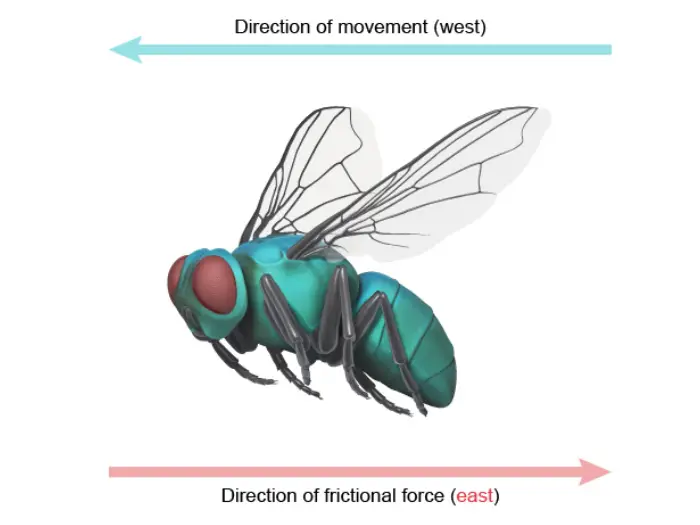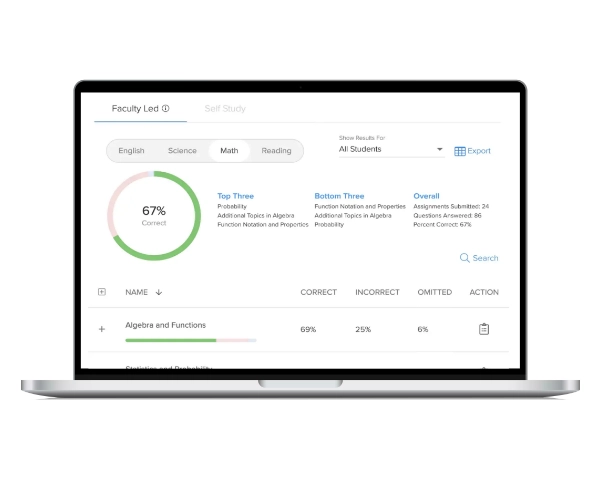Here’s a list of resources to support your school’s AP program and equip your students for SAT and ACT success.
Federal Funding Programs
Federal funding programs offer essential financial support to schools and districts through targeted initiatives. These programs allocate funds based on specific criteria, such as student demographics and program goals, and are often directed toward high-poverty schools. This funding provides much-needed resources for schools serving at-risk students, fostering educational equity.
Title I
Title I, a key component of the Elementary and Secondary Education Act (ESEA) as amended by the Every Student Succeeds Act (ESSA), provides critical funding to K-12 schools serving low-income families. Title I supports programs such as tutoring, professional development, and supplemental instruction that aims to ensure equitable, high-quality education for all students.
Learn MoreTitle II, Part A
Title II, Part A funding, also known as the Supporting Effective Instruction State Grant Program, provides vital resources for professional development and educator support in K-12 schools. This program enhances the quality and effectiveness of teachers, principals, and school leaders, aiming to improve student outcomes through targeted, flexible initiatives.
Learn MoreTitle IV, Part A
Title IV, Part A funding, known as the Student Support and Academic Enrichment (SSAE) grant program, helps K-12 schools improve academic achievement. This program supports access to a well-rounded education, safe and healthy learning environments, and enhanced use of technology to advance digital literacy and academic success.
Learn MoreTitle V, Part B
Title V, Part B, also known as the Rural Education Achievement Program (REAP), supports rural school districts with limited resources and personnel. REAP includes the Small Rural School Achievement Program (SRSA) and the Rural and Low-Income Schools Program (RLIS), providing flexibility and funding to improve student outcomes, reduce dropout rates, and address unique academic needs.
Learn MoreTitle VI
The Title VI Indian Education Formula Grants Program addresses the unique academic and cultural needs of American Indian and Alaska Native students. By funding schools and tribes, this program supports academic assistance, cultural education, and efforts to connect students with their heritage while helping them meet academic standards.
Learn MoreTitle VII
The Title VII Impact Aid Program funds school districts affected by lost property tax revenue due to tax-exempt federal property or increased costs from federally connected students. This program supports districts serving students on Indian lands, military bases, and other federal properties, offering flexible funds for instructional materials, salaries, technology, and more.
Learn MoreESSA
The Every Student Succeeds Act (ESSA) is the cornerstone of federal K-12 education funding. ESSA supports schools through formula and discretionary grants, advancing equity for high-need students. It emphasizes accountability, transparency in spending, and flexible policymaking while expanding access to high-quality preschool programs and addressing disparities in education outcomes.
Learn MoreTitle IX, Part A
The McKinney-Vento Homeless Assistance Act ensures homeless and foster youth have equal access to free, appropriate education. This federal funding supports programs for transportation, outreach, and re-engagement efforts. Despite additional funding from the American Rescue Plan, resources often fall short, with schools relying on private grants to fully meet the needs of homeless students.
Learn MoreIDEA
The Individuals with Disabilities Education Act (IDEA) provides essential funding to ensure students with disabilities receive a free appropriate public education (FAPE). This program supports special education for children ages 3-21. IDEA funding also supports early intervention, educator training, and related services, addressing the diverse needs of students with disabilities in equitable educational settings.
Learn MoreGEAR UP
The Gaining Early Awareness and Readiness for Undergraduate Programs (GEAR UP) increases college readiness and success for low-income and underrepresented students. Grants, typically lasting 7 years, fund initiatives such as financial aid counseling, mentoring, STEM programs, and college campus visits. GEAR UP empowers students from seventh grade through their first year of college by fostering partnerships between schools, higher education institutions, and community organizations.
Learn MoreThe Federal TRIO Programs
The Federal TRIO Programs provide funding to support low-income, first-generation, and disabled students. Key initiatives include Talent Search, which offers college counseling for grades 6-12, and Upward Bound, which provides academic and emotional support for high schoolers. TRIO aims to enhance college readiness and success for underserved communities.
Learn MoreTalent Search
Talent Search, a TRIO Program funded by the U.S. Department of Education, helps disadvantaged students in grades 6-12 prepare for college success. Talent Search provides free academic advising, tutoring, SAT/ACT prep, career exploration, and college tours. The program targets low-income and first-generation students to boost high school completion and postsecondary enrollment rates.
Learn MoreUpward Bound
Upward Bound, a TRIO Program funded by the U.S. Department of Education, helps high school students from low-income or first-generation backgrounds prepare for college. Grants fund free services such as tutoring, mentoring, college application assistance, and summer programs. Upward Bound aims to boost college enrollment and graduation rates for underserved students.
Learn MoreTalent Search
Talent Search, a TRIO Program funded by the U.S. Department of Education, helps disadvantaged students in grades 6-12 prepare for college success. Talent Search provides free academic advising, tutoring, SAT/ACT prep, career exploration, and college tours. The program targets low-income and first-generation students to boost high school completion and postsecondary enrollment rates.
Learn More
The End of Federal ESSER Funds
The ESSER fund, created through the CARES Act, offered financial support to schools during the COVID-19 pandemic.1 These funds enabled districts to invest in remote learning tools, health and safety measures, and programs addressing learning loss. Now that the Jan. 28, 2025, spending deadline for this fund has passed, schools face a potential "fiscal cliff." Districts that used ESSER for recurring expenses, such as hiring interventionists and counselors, must now integrate these costs into their regular budgets, posing significant challenges.
State Funding Sources
Most educational funding in the United States comes from state governments, which generate revenue through income and sales taxes. These funds are distributed to school districts using formulas unique to each state. On average, states contribute $7,740 per student, with local governments adding approximately $7,560. In comparison, federal funding accounts for just $2,400 per student.2
- Alabama
- Alaska
- Arizona
- Arkansas
- California
- Colorado
- Connecticut
- Delaware
- District of Columbia
- Florida
- Georgia
- Hawaii
- Idaho
- Illinois
- Indiana
- Iowa
- Kansas
- Kentucky
- Louisiana
- Maine
- Maryland
- Massachusetts
- Michigan
- Minnesota
- Mississippi
- Missouri
- Montana
- Nebraska
- Nevada
- New Hampshire
- New Jersey
- New Mexico
- New York
- North Carolina
- North Dakota
- Ohio
- Oklahoma
- Oregon
- Pennsylvania
- Rhode Island
- South Carolina
- South Dakota
- Tennessee
- Texas
- Utah
- Vermont
- Virginia
- Washington
- West Virginia
- Wisconsin
- Wyoming
Grants, Private Funding, and Crowdfunding
While federal and state funding are key resources, schools can also explore education grants for teachers, private education funding, and crowdfunding to support educational programs. Competitive grants from organizations and private foundations provide education funding directly to districts, schools, or educators for specific initiatives. Crowdfunding platforms offer another avenue, allowing communities to contribute smaller donations toward a shared goal, fostering financial support and a sense of collective involvement in education.
| Crowdfunding |
|---|
Looking for the best resources to support your students’ success? Discover how UWorld’s Learning Tools for AP, SAT & ACT provide cutting-edge tools to support your instruction, empowering your students to excel on their exams and beyond.

References
- School State Finance Project. (n.d.). ESSER funding. Retrieved January 16, 2025, from https://schoolstatefinance.org/issues/esser-funding
- Education Data Initiative. (n.d.). Public education spending statistics. Retrieved January 16, 2025, from https://educationdata.org/public-education-spending-statistics

